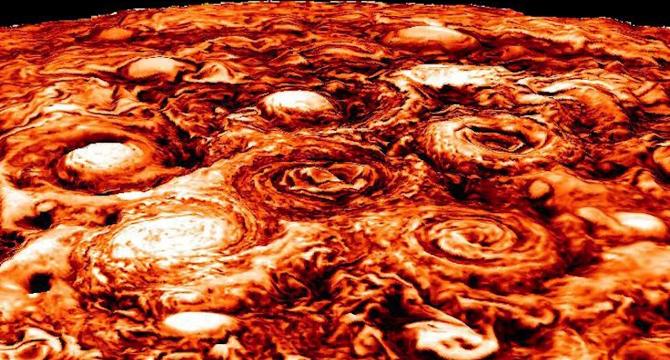Earthsky
3d
40

Image Credit: Earthsky
Jupiter and Io: New insights into stormy, volcanic worlds
- A new analysis of data from NASA's Juno spacecraft provided insights into the dynamics of Jupiter's atmosphere and Io's volcanic activity.
- Jupiter and Io stand out as two of the most active celestial bodies in our solar system, with Jupiter hosting massive cyclones and jet streams, while Io is known for its high volcanic activity.
- The Juno spacecraft discovered that the cyclones at Jupiter's north pole behave like hurricanes on Earth but on a much grander scale.
- Juno also revealed the presence of warm magma beneath Io's surface, below approximately 10% of its cooler crust.
- Scott Bolton, the principal investigator of Juno, described Jupiter as a planet of extremes, boasting enormous polar cyclones, powerful jet streams, and intense volcanic activities.
- Unlike Earth's storms, Jupiter's cyclones, especially those around its north pole, can last for extended periods due to the absence of land masses to disrupt their movement.
- NASA's Juno mission used radio waves to measure the temperatures in Jupiter's atmosphere via a technique called radio occultation, unveiling the planet's atmospheric dynamics.
- Io's surface, characterized by sulfur volcanoes and ongoing eruptions, hides warm magma beneath the cooled crust, aiding in the efficient transfer of heat to the moon's surface.
- Juno also witnessed the largest eruption on Io, highlighting the moon's active volcanic nature and the continuous discovery process of Juno's mission.
- Juno's ability to explore new regions and gather unique data about Jupiter and Io underscores its significance in expanding our understanding of these stormy and volcanic worlds.
Read Full Article
2 Likes
For uninterrupted reading, download the app